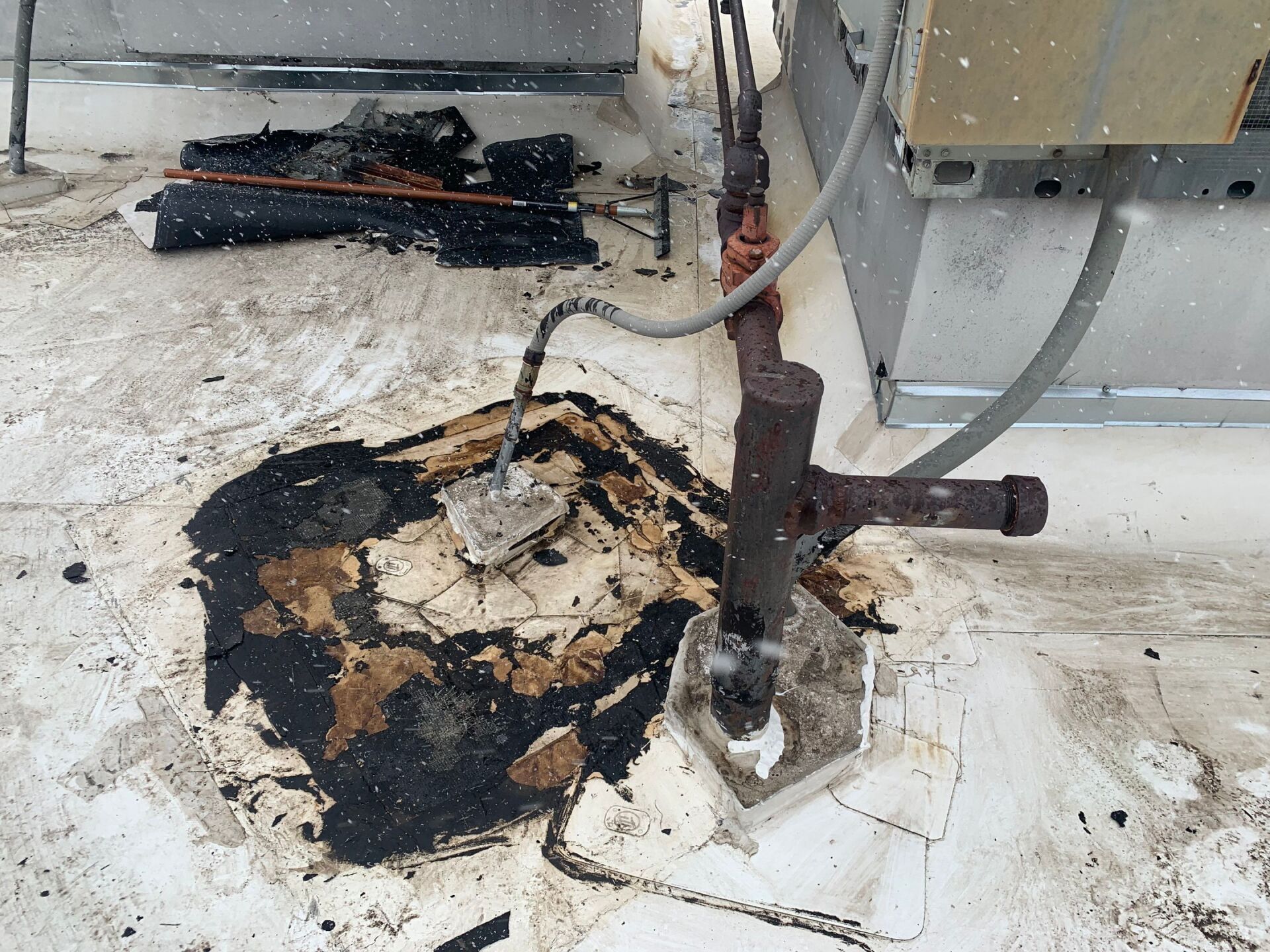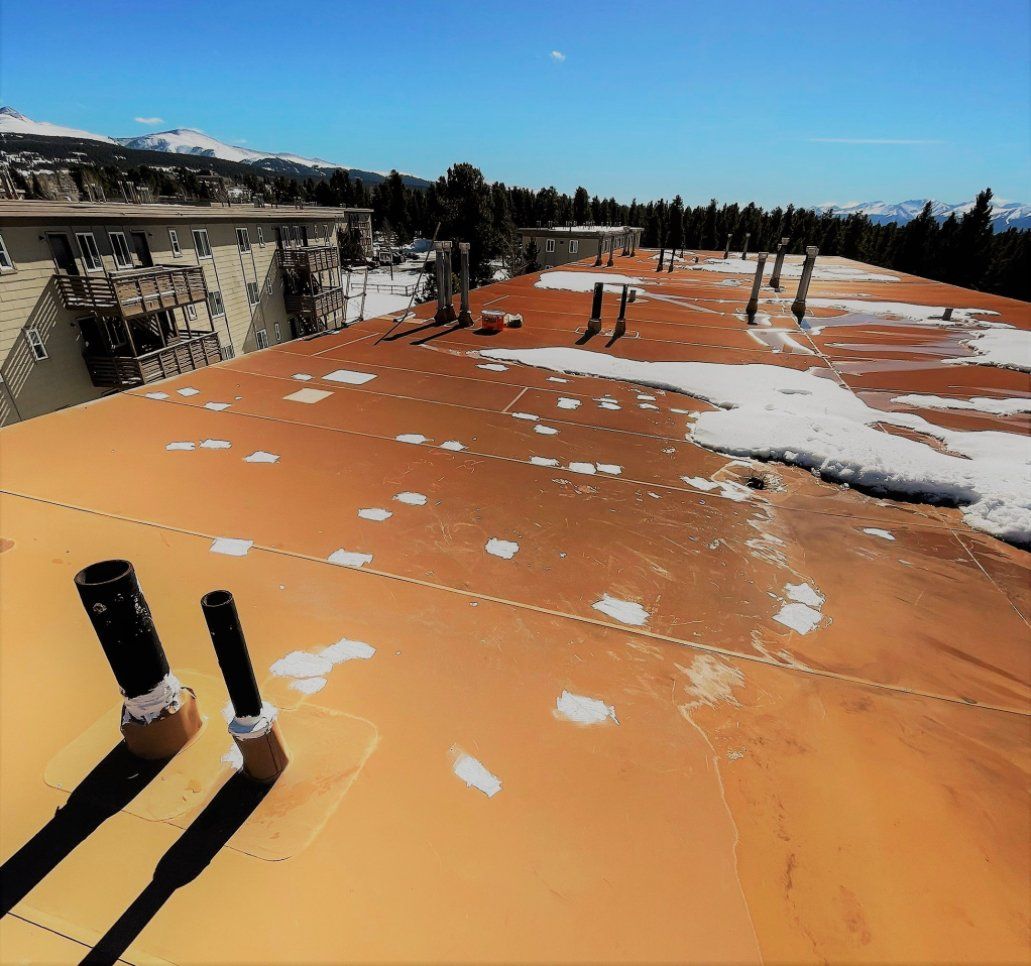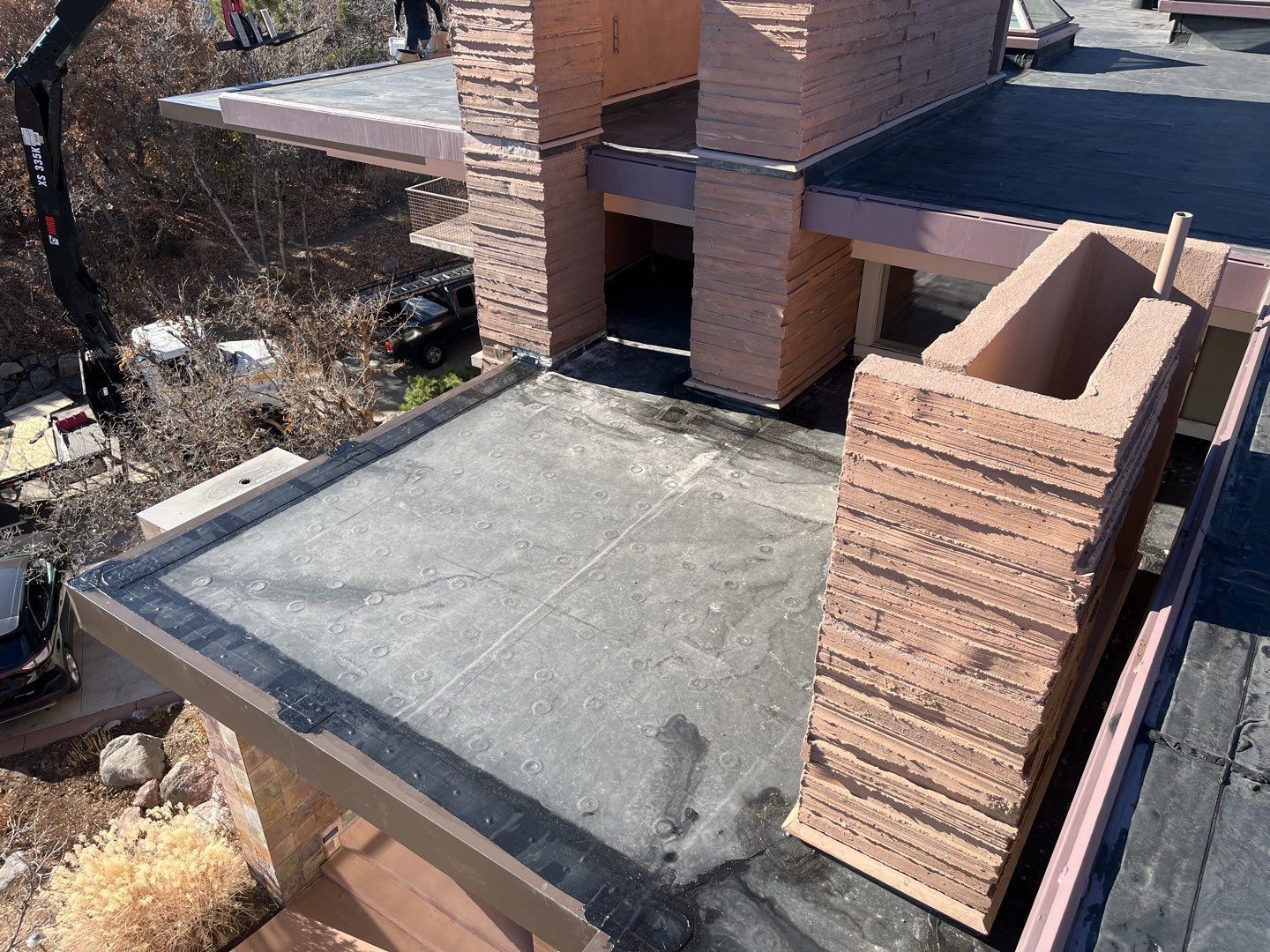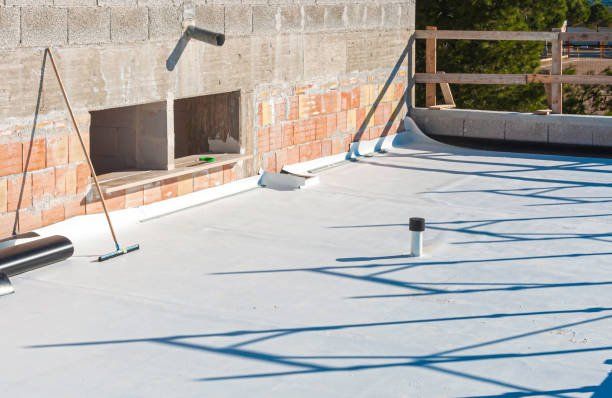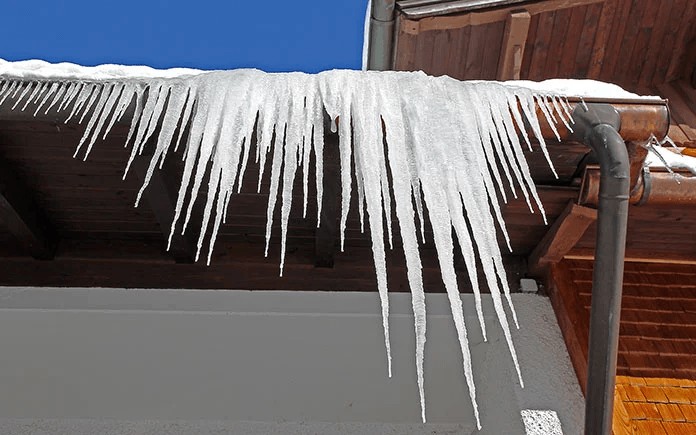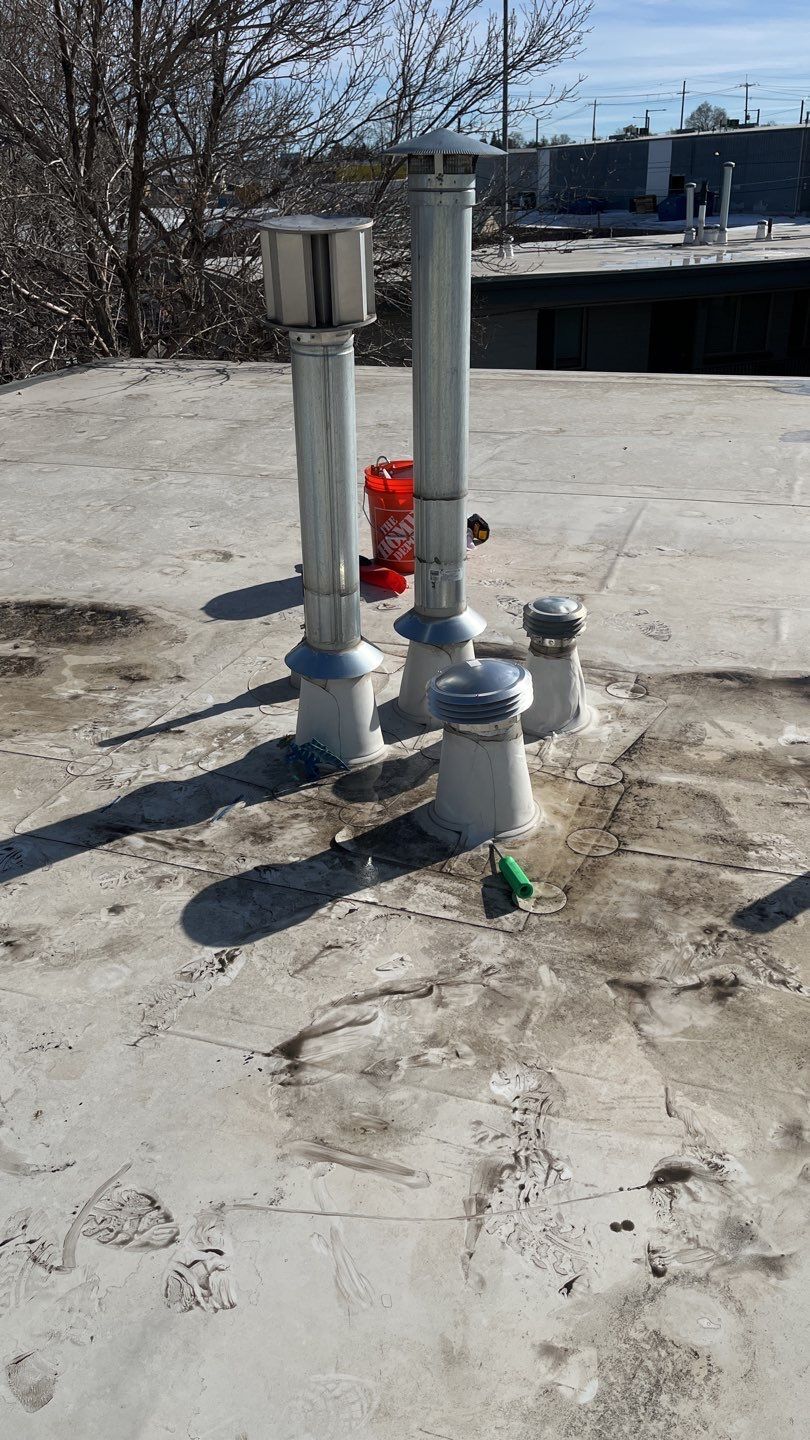Last week we discussed the pros and cons of EPDM for low slope roofs. Today we will explore TPO: what it is, the pros and cons of this roofing material, and how to care for and maintain your TPO roof to get the most life out of it.
What exactly is TPO?
TPO, or thermoplastic polyolefin, is made of polypropylene and ethylene-propylene rubber. Polypropylene is known for its elasticity, durability, and slippery characteristics, making it great at repelling rain or snow. Ethylene-propylene is a synthetic elastomer related to rubber. TPO comes in various size sheets and various colors, such as bright white, black, tan, and light gray.
What are the benefits of choosing TPO as a low slope roofing material?
TPO has several advantages:
- Ability to resist weather.
- Resistant to ozone, heat and oxidation. Even colors other than white are UV resistant.
- Easy to install and maintain.
- Flexible; can be installed on both residential and commercial properties.
- Energy savings. TPO roofs are reflective and surpass the Environmental Protection Agency's ENERGY STAR requirements.
- Affordable. TPO has a lower price point than other low slope roofing material options.
What are the cons of using TPO?
- One of the disadvantages of TPO is merely the fact that it is a relatively new material and does not have the benefit of being tested over time.
- May be more susceptible to leaks. Because TPO is sold in small width rolls, there are seams every 6 to 8 feet. Seams are where membranes may become loose due to expansions and contractions. Loose membranes may lead to leaks from seam failures.
- Differences in quality depending on the manufacturer.
- Differences in thickness. Some believe that thicker TPO will yield a longer lasting product. However, there is no evidence of this as of yet. Experts believe with proper care and maintenance, a TPO roof will last 10 to 20 years.
How do you install, maintain and repair TPO?
To install TPO, first the area must be prepped by cleaning it and if necessary, removing the existing covering. The TPO membrane is then rolled out over the roof and is secured to the roof’s cover board with a mechanical tool or adhesive. Finally, a hot air gun or welder is used to seal the seams of the TPO material together, fully insulating the roof.
A TPO roof needs regular cleaning and maintenance to maintain its integrity. Cleaning is necessary to remove debris which may inhibit the reflective properties. A mild and non-abrasive household detergent may be used for cleaning. Use a long-handled brush with soft bristles. Make sure to rinse off the solution completely with a pressure washer set on low. It is recommended that only professionals clean a TPO membrane, as wet TPO roofs are very dangerous due to their slippery nature, and they also may be easily damaged.
Although TPO roofs and highly resistant to tears, impacts, and punctures, flaws still may occur. Because TPOs are heat-weldable, a patch can be made if there is a simple puncture. However, electricity, a hot-air welding tool, and patching material will be needed – tools that professional roofing contractors, and not an average building owner, will have on hand. Therefore, it's recommended that only professionals perform these repairs.
As with EPDM, proper care and maintenance of your TPO roof is necessary but may be time consuming and does require specialized tools and equipment. With our 3-year, no leak, no dollar limit warranty program, Watershed Roofing and Restoration takes care of all of this by providing:
- cleaning
- scrubbing
- membrane inspections
- repairs
- gutter cleanings
So, you can rest assured you are taking care of your TPO roof and increasing its life expectancy and functionality.
If you are considering TPO or any other low slope roofing material, Watershed Roofing would be happy to discuss your options so you can make the most educated decision. Give us a call today!
